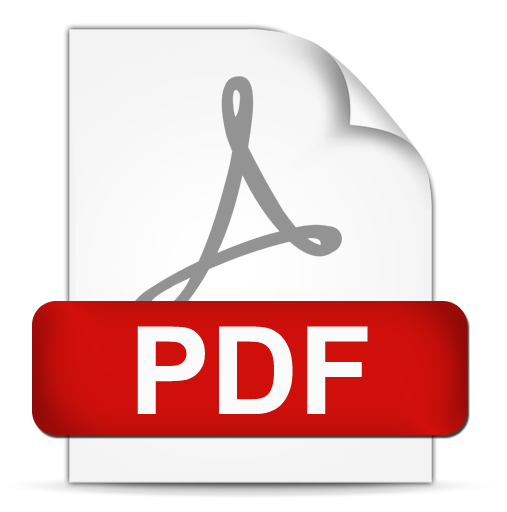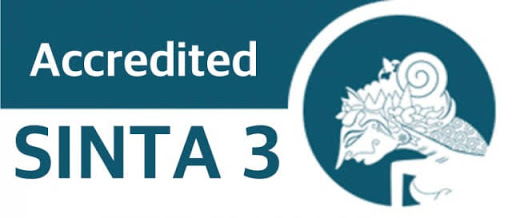Working Capital Management dan Firm Profitability Perusahaan Sektor Manufaktur di Bursa Efek Indonesia dan Bursa Efek Filipina Periode 2014-2018
 Abstract Views:
1218 times
Abstract Views:
1218 times
 PDF Downloads:
769 times
PDF Downloads:
769 times
Abstract
This study aims to analyze the effect of working capital management on the profitability of companies in Indonesia and Philippines. This study uses secondary data from companies listed in Indonesia Stock Exchange and Philippines Stock Exchange in the 2014-2018 period. The sample used in this study includes manufacturing sector companies listed in Indonesia Stock Exchange and Philippines Stock Exchange in that period. This research uses multiple linear regression method. Working capital is measured using cash conversion cycle, accounts receivable conversion period, inventories conversion period, and accounts payable deferral period. The results of the Indonesian sample show that the cash conversion cycle and its components, namely the accounts receivable conversion period, the inventories conversion period, and the accounts payable deferral period have a significant positive effect on firm profitability. For the Philippine sample, the result of the study show that the cash conversion cycle and its components does not have a significant effect on firm profitability.
Keywords: cash conversion cycle, accounts receivable conversion period, inventories conversion period, accounts payable deferral period
Downloads
References
Afrifa, G.A. & Padachi K. (2016). Working capital level influence on SME profitability. Journal of Small Business and Enterprise Development, 23(1), 44-63.
Altaf, N, & Shah, FA. (2018). How does working capital management affect the profitability of Indian companies?. Journal of Advances in Management Research, 15(3), 347-266.
Banerjee, S., Gatchev, V.A. & Spindt, P.A. (2007). Stock market liquidity and firm dividend policy. Journal of Financial and Quantitative Analysis, 42(2), 369-397.
Baños-Caballero, S., García-Teruel, P.J. & Martínez-Solano, P. (2013). The speed of adjustment in working capital requirement. The European Journal of Finance, 19(10), 978-992.
Danielson, M.G. & Scott, J.A. (2004). Bank loan availability and trade credit demand. Financial Review, 39(4), 579-600.
Deloof, M, & Jegers, M. (1996). Trade credit, product quality, and intragroup trade: some European evidence. Financial Management, 25(3), 33-43.
Deloof, M. (2003). Does Working Capital Management Affect Profitability of Belgian Firms. Journal of Business Funance and Accounting, 30(3&4), 573-587.
Ibrahim, H. (2008). Pengaruh Tingkat Suku Bunga, Peringkat Obligasi, Ukuran Perusahaan dan DER terhadap Yield to Maturity Obligasi Korporasi di Bursa Efek Indoneia Periode Tahun 2004-2006 [Tesis]. Semarang: Universitas Diponegoro.
Martínez-Sola, C., García-Teruel, P.J. & Martínez-Solano, P. (2013). Corporate cash holding and firm value. Applied Economics, 45(2), 161-170.
Mathuva, D. (2010). The influence of working capital management components on corporate profitability: a survey on Kenyan listed firms. Research Journal of Business Management, 4(1): 1-11.
Murhadi, W.R. (2013). Manajemen Modal Kerja dan Profitabilitas di Bursa Efek Indonesia. Pontianak: Proceedings FMI Universitas Tanjung Pura.
Ng, C.K., Smith, J.K. & Smith, R.L. (1999). Evidence on the determinants of credit terms used in interfirm trade. The Journal of Finance, 54(3): 1109-1129.
Padachi, K. (2006). Trends in working capital management and its impact on firms’ performance: an analysis of Mauritian small manufacturing firms. International Review of Business Research Papers, 2(2): 45-58.
Pais, M.A. & Gama, P.M. (2015). Working capital management and SMEs profitability: Portuguese evidence. International Journal of Managerial Finance, 11(3): 341-358.
Pike, R., Cheng, N.S., Cravens, K. & Lamminmaki, D. (2005). Trade credit terms: asymmetric information and price discrimination evidence from three continents. Journal of Business Finance & Accounting, 32(5&6), 1197-1236.
Raheman, A., Afza, T., Qayyum, A. & Bodla, M.A. (2010). Working capital management and corporate performance of manufacturing sector in Pakistan. International Research Journal of Finance and Economics, 47(1), 156-169.
Shin, H.H. & Soenen, L. (1998). Efficiency of Working Capital and Corporation Profitability. Financial Practice and Education: Journal of the Financial Management Association, 8(2), 37-45.
Smith, J.K. (1987). Trade credit and informational asymmetry. The Journal of Finance, 42(4), 863-872.
Smith, K. (1980). Profitability versus liquidity tradeoffs in working capital management. Readings on the Management of Working Capital, 42, 549-562.
Syaifuddin, D.T. (2008). Manajemen Keuangan (Teori dan Aplikasi). Kendari: Unhalu Press.
Tahir, M. & Anuar. (2016). The determinants of working capital management and firms performance of textile sector in Pakistan. Quality & Quantity, 50(2), 605-618.
Tauringana, V. & Afrifa, G.A. (2013). The relative importance of working capital management and its components to SMEs profitability. Journal of Small Business and Enterprise Development, 20(3), 453-469.
Tran, H., Abbott, M. & Yap, C.J. (2017). How does Working Capital Management Affect the Profitability of Vietnamese Small and Medium Sized Enterprises?. Journal of Small Business and Enterprise Development, 24(1), 2-11.
Wilner, B.S. (2000). The exploitation of relationships in financial distress: The case of trade credit. The Journal of Finance, 55(1), 153-178.

This work is licensed under a Creative Commons Attribution 4.0 International License.
Articles published in Journal of Entrepreneurship & Business are licensed under a Creative Commons Attribution 4.0 International (CC BY) license. You are free to copy, transform, or redistribute articles for any lawful purpose in any medium, provided you give appropriate credit to the original author(s) and the journal, link to the license, and indicate if changes were made.
Authors submitting to this journal agree to make their work freely available under the CC BY 4.0 license, ensuring broad dissemination and reuse. The full license details can be accessed at https://creativecommons.org/licenses/by/4.0/.
This ensures that they receive the maximum dissemination because there are no barriers to access. This license allows readers to disseminate and reuse the paper, but always requires them to grant the authors and the first publication full credit.
While JEB upholds ethical publishing standards, the responsibility for ensuring originality and compliance with copyright regulations lies with the authors. The journal is not liable for any legal claims related to the content of published articles.
For further inquiries, please contact the editorial team.

 DOI:
DOI:











